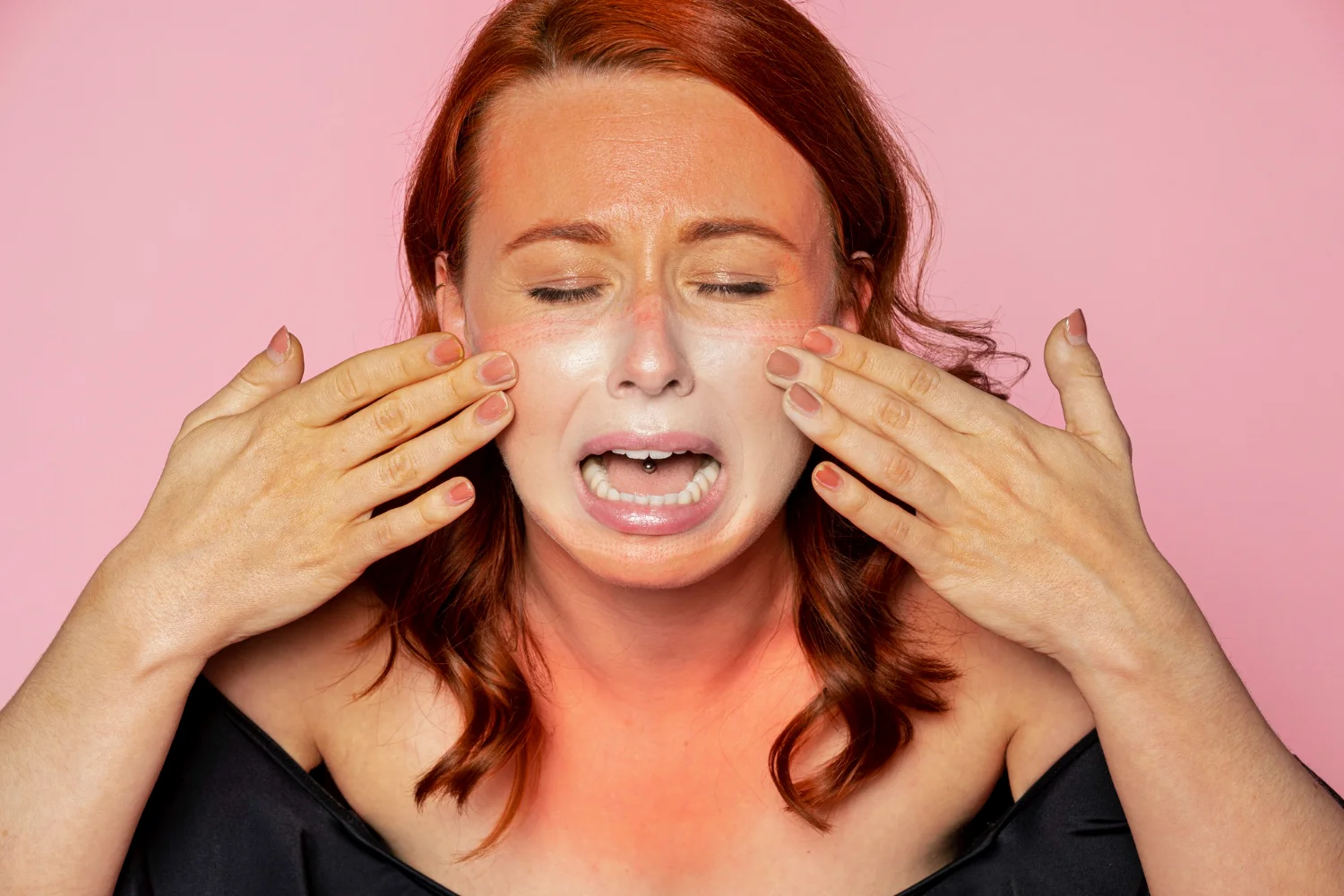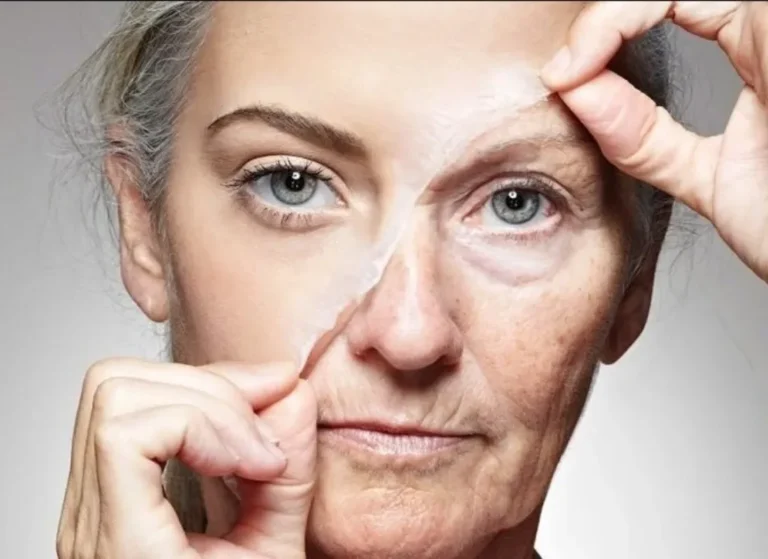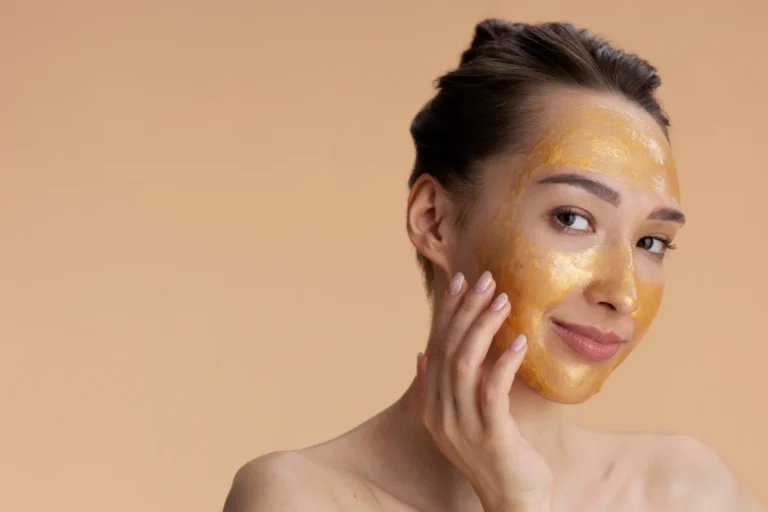Dealing with Ruddy Skin: Causes and Treatments
Ruddy skin is a common skin concern that can be a pain to deal with, especially during the winter. If your skin is prone to flushing and redness, then you’ve probably heard the term ‘ruddy skin’ once or twice before. Ruddiness skin characterizes continuous facial redness, resembling the post-workout flush but present all the time. In this article, we will discuss everything you need to know about managing ruddy skin, including the right skincare products and makeup essentials to use to conceal it.
What is Ruddy Skin?
Ruddy skin is a term used to describe facial redness, which can be caused by a variety of factors. It is characterized by a reddish tone on the skin, similar to the flushing you experience after a workout. Ruddy skin can be a result of sunburn, acne, hot flashes, rosacea, psoriasis, eczema, allergic reactions, and skin cancer. It is important to visit your dermatologist to determine what specifically is causing your ruddy dermis. They not only help identify the root cause but also guide you on effective strategies for managing this skin condition.
What Does Ruddy Skin Look Like?
If you observe regions of your skin retaining a reddish hue, whether it’s around your nose, under your eyes, on your cheeks, or elsewhere, it’s a clear sign that you possess ruddy skin. This distinct appearance can be associated with different skin conditions and health issues. Seeking guidance from your dermatologist is advisable to identify the precise cause of your ruddy skin and explore suitable measures for addressing it.
The causes of ruddy skin
Experiencing a constant flush on your face can be attributed to a multitude of factors. As noted by the American Academy of Dermatology, several elements can contribute to the reddening of your complexion, ranging from the usual suspects like sunburn, acne, and hot flashes. However, delving deeper, a ruddy skin color may also be linked to more underlying conditions such as rosacea, psoriasis, eczema, allergic reactions, and even skin cancer. Given the varied possibilities tied to different skin conditions and health concerns, it’s advisable to schedule a consultation with your dermatologist. They can pinpoint the specific cause behind your ruddy dermis and guide you on effective management strategies tailored to your unique situation.
Here are some of the prevalent causes:
1. Sunburn
Experiencing sunburn goes beyond mere discomfort; it can be genuinely bothersome, leaving your skin marked with dark spots and noticeable patches of redness. The formidable impact of the sun’s UV rays highlights the vital necessity of ensuring robust protection for your skin whenever you’re out in the sun on a hot day. Understanding the potential repercussions of sun exposure is crucial, prompting the need for proactive measures to shield your skin from the adverse effects of UV radiation.
2. Genetics
Genetics play a significant role in determining skin tone and susceptibility to redness. Individuals with fair or sensitive skin are more prone to developing ruddy complexion, as their skin tends to have thinner blood vessel walls, making them more susceptible to dilation.
3. Acne
Acne significantly influences the skin, with one of its primary side effects being the development of redness. Despite its common occurrence and the potential for improvement through diligent skincare practices, it’s important to recognize acne as a medical concern. Seeking assessment from a doctor or a qualified dermatologist is advisable for a comprehensive understanding and effective management of this skin condition.
4. Rosacea
Rosacea is a common chronic skin condition characterized by persistent facial redness, visible blood vessels, and occasional flare-ups of papules and pustules. While the exact cause of rosacea remains unclear, factors such as genetics, immune system dysfunction, and abnormal blood vessel function may contribute to its development.
5. Allergic reactions
When our bodies encounter an allergic reaction, they kick into protective mode, attempting to fend off the perceived threat. This defensive response often manifests as skin inflammation accompanied by noticeable redness. It’s crucial to be mindful of any allergies you may have and take adequate precautions to shield yourself from potential flare-ups. Understanding your sensitivities and proactively protecting against them is key to maintaining skin health.
6. Environmental Triggers
Exposure to environmental factors such as extreme temperatures, sunlight, wind, and humidity can exacerbate ruddy skin. Cold weather, in particular, can cause blood vessels to constrict and then rapidly dilate when moving into a warmer environment, resulting in flushing.
How to Treat Your Ruddy Skin
In managing a complexion concern like ruddy skin, the goal is improvement rather than complete elimination. Achieving complete removal of ruddy dermis might not be feasible, but there are effective strategies to enhance and restore your skin’s appearance. Here are some informative tips to help you effectively manage ruddy skin:
1. Proper Skincare Regimen
Developing a gentle skincare routine tailored to your skin type can help reduce redness and inflammation. Opt for fragrance-free, hypoallergenic products formulated for sensitive skin, and avoid harsh ingredients like alcohol and sulfates. Incorporating soothing ingredients such as aloe vera, green tea extract, and niacinamide can help calm irritated skin and strengthen the skin barrier.
2. Antioxidant Serums
Enhance your skincare routine by introducing an antioxidant-rich serum. Look for a serum formulated with potent antioxidants like vitamin C and ferulic acid. These ingredients work together to combat environmental stressors while boosting radiance. For individuals with ruddy skin, such serums can offer additional benefits by reducing redness and inflammation, resulting in a healthier and more even complexion.
3. Sun Protection
Protecting your skin from the sun’s harmful UV rays is crucial for preventing redness and minimizing flare-ups. Apply a broad-spectrum sunscreen with an SPF of 30 or higher daily, even on cloudy days, and reapply every two hours when exposed to direct sunlight. Wearing protective clothing, such as wide-brimmed hats and sunglasses, can provide additional defense against UV damage.
4. Don’t Over Exfoliate Your Skin
Be mindful not to overdo exfoliation on your skin. While exfoliating is beneficial for removing dead skin cells and promoting cell turnover, excessive exfoliation can lead to irritation and sensitivity, particularly for those with ruddy skin. It’s essential to strike a balance and exfoliate only as needed to avoid exacerbating redness and inflammation. Opt for gentle exfoliants and limit exfoliation to no more than a couple of times a week to maintain a healthy and balanced complexion.
5. Moisturize, Moisturize, Moisturize
Keeping your skin adequately moisturized can help alleviate dryness and reduce the appearance of redness. Choose a lightweight, non-comedogenic moisturizer that hydrates the skin without clogging pores, and apply it consistently morning and night. Seek out skincare products infused with the hydrating prowess of ingredients like hyaluronic acid, glycerin, and ceramides to replenish moisture levels and bolster the skin’s protective barrier.
6. Topical Treatments
Topical treatments containing ingredients such as azelaic acid, metronidazole, and sulfur can help manage redness associated with rosacea and other inflammatory skin conditions. These medications work by reducing inflammation, inhibiting the growth of bacteria, and constricting blood vessels, resulting in a calmer complexion over time. However, it’s essential to consult a dermatologist before incorporating any new treatments into your skincare routine, as they can provide personalized recommendations based on your specific needs.
7. Laser Therapy
For individuals with persistent redness and visible blood vessels, laser therapy can be an effective treatment option. Laser treatments target blood vessels beneath the skin’s surface, causing them to collapse and fade away gradually. This process reduces redness and improves overall skin tone, leaving behind a more even complexion. Multiple sessions may be required to achieve optimal results, and side effects such as temporary swelling and redness are common but typically subside within a few days.
Tips for Managing Ruddy Skin
In addition to professional treatments, making simple lifestyle modifications can help minimize redness and maintain a healthy complexion. Here are some practical tips for managing ruddy skin:
Avoid Hot Showers
Hot showers can cause your skin to become dry and irritated, which can exacerbate ruddy skin. Instead, opt for lukewarm water and limit your shower time to 10 minutes or less.
Use a Humidifier
Dry air can make ruddy skin worse, so using a humidifier can help keep your skin hydrated. Aim for a humidity level of 40-50%.
Avoid Spicy Foods
Spicy foods can cause your skin to flush, which can make ruddy dermis worse. If you’re prone to ruddy dermis, it’s best to avoid spicy foods altogether.
Avoid Alcohol-Based Products
Alcohol-based products can be harsh on ruddy skin, so it’s best to avoid them. Look for products that are labeled as alcohol-free.
Use a Green-Tinted Primer
A green-tinted primer can help neutralize redness and even out your skin tone. We recommend the Smashbox Photo Finish Color Correcting Foundation Primer.
Use a Gentle Cleanser
Use a mild, non-abrasive cleanser to wash your face twice daily, avoiding hot water and harsh scrubbing motions that can further irritate the skin. Pat your skin dry with a soft towel and follow up with a gentle moisturizer to lock in hydration and soothe any redness or inflammation.
Stay Hydrated
Drink an adequate amount of water throughout the day to keep your skin hydrated and support overall skin health. Dehydration can exacerbate redness and make the skin appear dull and lackluster, so aim to consume at least eight glasses of water daily to maintain optimal hydration levels.
Practice Stress Management
Stress can trigger inflammation and exacerbate ruddy skin, so incorporating stress-reducing activities such as yoga, meditation, deep breathing exercises, and mindfulness techniques into your daily routine can help promote relaxation and improve skin health.
Choose Makeup Wisely
Opt for hypoallergenic, non-comedogenic makeup products formulated for sensitive skin to minimize the risk of irritation and redness. Look for foundations and concealers with green or yellow undertones to neutralize redness and create a more even skin tone. Remember to remove makeup thoroughly before bedtime to prevent pore-clogging and irritation.
Final Thought
Ruddy skin can be a source of frustration and self-consciousness for many individuals, but with the right approach, it is possible to manage redness and achieve a calmer, more balanced complexion. By understanding the underlying causes of ruddy skin, adopting a gentle skincare routine, seeking appropriate treatments, and making simple lifestyle modifications, you can effectively reduce redness and maintain healthy, radiant skin. Remember to consult a dermatologist for personalized recommendations and guidance tailored to your unique skin needs. With patience, consistency, and a bit of self-care, you can embrace your natural beauty and feel confident in your skin.
Some of the most Common FAQ’s for Ruddy Skin
Q. What is ruddy skin?
Ruddy skin is a term used to describe facial redness, which can be caused by a variety of factors. It is characterized by a reddish tone on the skin, similar to the flushing you experience after a workout.
Q. What causes ruddy skin?
Ruddy skin can be a result of sunburn, acne, hot flashes, rosacea, psoriasis, eczema, allergic reactions, and skin cancer. It is important to visit your dermatologist to determine what specifically is causing your ruddy skin.
Q. How can I manage ruddy skin?
To manage ruddy skin, take sun protection measures, avoid over-exfoliating your skin, moisturize daily, and use makeup to conceal ruddy dermis. If you’re still struggling with ruddiness skin, visit your dermatologist to determine what specifically is causing your ruddy skin and how to manage it.
Q. What are some home remedies for ruddy skin?
There are several home remedies that can help soothe ruddy skin. Here are a few:
- Cucumber: Cucumber has anti-inflammatory properties that can help reduce redness. Cut a cucumber into thin slices and place them on your face for 10-15 minutes.
- Green Tea: Green tea is rich in antioxidants that can help calm ruddy dermis. Steep a green tea bag in hot water for a few minutes, let it cool, and then apply it to your face.
- Oatmeal: Leverage the anti-inflammatory properties of oatmeal to calm ruddy skin. Create a paste by combining a tablespoon of oatmeal with a small amount of water. Apply this paste to your face and let it sit for a rejuvenating 10-15 minutes.
- Honey: Harness the antibacterial prowess of honey to diminish inflammation. Simply apply a thin layer of honey to your face and allow it to work its magic for a relaxing 10-15 minutes.









